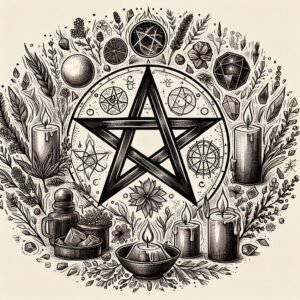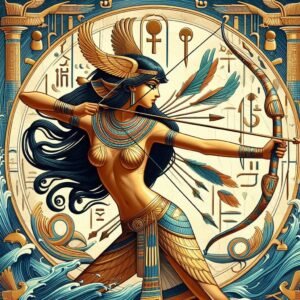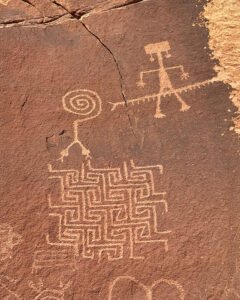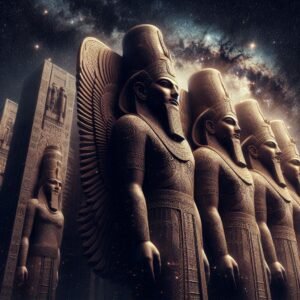
The Sumerians, deeply connected to the Tigris and Euphrates rivers that cradled their civilization, had a profound reverence for these waterways, which was reflected in their religious rituals.
River related rituals
One such ritual was the ‘mîs-pî’, an intricate ceremony that involved the ‘washing of the mouth’ of divine statues, symbolizing purification and the induction of life into the idols. This ritual was often conducted beside a river, linking the life-giving properties of water to the spiritual activation of the statue.
The rivers were not only vital for sustenance but also served as a medium for the Sumerians to interact with their gods.
Another significant ritual was the ‘pit pî’, or ‘opening of the mouth’, performed to animate statues of gods with offerings of syrup, ghee, and aromatic woods like cedar and cypress. This ritual, while not exclusively a river-related event, was part of the broader context in which the Sumerians viewed the rivers as sources of life and channels of communication with the divine. The rivers’ waters were seen as purifying elements, essential in the preparation of sacred spaces and objects.
The Sumerians also had rituals for the ‘ear-opening’ of statues, known as ‘pit uzni’, which, like the ‘mîs-pî’, were likely performed near rivers to utilize the purifying qualities of the water. These ceremonies were integral to the consecration of statues, ensuring that they could ‘hear’ prayers and ‘consume’ offerings. The rivers, thus, were not just physical entities but were imbued with spiritual significance, playing a central role in the religious life of the Sumerians.
River related festivals
The importance of rivers in Sumerian rituals is further underscored by the fact that many of their gods were associated with water and fertility.
Enki, the god of wisdom and water, was believed to have created the Tigris and Euphrates, and his favour was sought through rituals to ensure the proper flow and beneficial flooding of the rivers. The goddess Inanna, associated with love and fertility, was also linked to the life-giving aspects of water, and her temples were often located near water sources.
The intimate relationship between the people and their rivers, the Tigris and Euphrates, was celebrated through various festivals, with the most prominent being the Akitu festival. This New Year’s celebration, which dates back to the Early Dynastic Period, was deeply intertwined with the agricultural cycle, coinciding with the springtime flooding of the rivers that was crucial for irrigating crops. The Akitu festival involved a series of rituals and ceremonies that lasted for several days, during which the statues of gods were paraded and offerings were made to ensure the rivers’ benevolence for the coming year.
The festival served multiple purposes; it was a time for the community to come together in a collective act of worship and Thanksgiving for the rivers’ life-giving waters. It also had political significance, reaffirming the king’s divine mandate to rule. The Akitu festival was a public demonstration of the gods’ approval of the monarch, legitimizing his authority through the patron deity’s symbolic participation in the festivities.
Another river-related event mentioned in the Sumerian poem “Shulgi and Ninlil’s Barge” describes King Shulgi of Ur adorning a ship in honour of the god Enlil and his consort Ninlil, taking their statues downriver from Nippur to the sacred site of Tummal for a banquet. This event underscores the importance of river travel in religious observances and the role of the rivers as sacred spaces where the divine could be engaged directly.
Festivals in ancient Mesopotamia were not limited to the Akitu. They included celebrations of gods’ birthdays, ceremonial mourning for deities like Tammuz, and commemorations of significant events such as military victories or the completion of important structures like temples or palaces. These festivals were often linked to the agricultural calendar, marking the sowing and reaping of crops, and were seen as essential for maintaining the favour of the gods, who were believed to control all aspects of life, including the forces of nature.
The rivers as Gods
The rivers themselves were deified and worshipped as gods, with the god Enki, also known as Ea, being associated with the sweet waters of the Abzu, the underground freshwater ocean that fed the rivers. Enki was considered the creator of the Tigris and Euphrates and was worshipped through rituals that sought to ensure the proper flow and beneficial flooding of the rivers. The goddess Inanna, later known as Ishtar, was also associated with water and fertility, and her temples were often located near rivers or other water sources.
The Sumerians’ religious calendar was filled with festivals that celebrated the natural cycles and the gods who controlled them. These events were times of great communal activity, involving processions, feasting, music, and dance. They were also occasions for personal piety, where individuals could make offerings or perform acts of devotion to the gods. The festivals were an essential part of the Sumerian religious experience, reflecting their understanding of the world as a place where the human and divine realms intersected, with the rivers serving as a vital link between the two.
Mythological traditions related to rivers
The Sumerians had a rich mythological tradition that included several river-related myths and legends. One of the most significant of these is the Eridu Genesis, also known as the Sumerian Creation Myth or the Sumerian Deluge Myth. This narrative describes the creation of humanity by the gods, the establishment of kingship, the founding of the first cities, and a great flood that devastated the land.
The Eridu Genesis tells of the goddess Nintur, who called upon humans to leave their nomadic ways and establish cities and temples, thus beginning civilized life. The cities of Eridu, Badtibira, Larak, Sippar, and Shuruppak were founded, each with its own ruler, and they functioned as distributional economies rather than monetary ones.
However, the noise created by humans disturbed the god Enlil, who decided to send a flood to destroy humanity. The god Enki, however, warned a man named Ziusudra, instructing him to build a boat to save himself, his family, and a pair of each living creature.
This Sumerian flood story predates and likely influenced later deluge myths found in various cultures, including the Epic of Gilgamesh and the biblical story of Noah’s Ark. The theme of a great flood sent by the gods as a form of divine retribution is a common motif in ancient Near Eastern literature, reflecting the unpredictable and often destructive nature of the rivers that were central to the Sumerians’ existence.
Another Sumerian myth involving rivers is the tale of Enlil and Ninlil, which describes the god Enlil’s banishment to the netherworld and his wife Ninlil’s journey to follow him. The story mentions the river and its ferryman, Urshanabi, who crosses the river in a boat. This theme is echoed in the later Epic of Gilgamesh, where Urshanabi helps Gilgamesh cross the waters of death searching for immortality.
The rivers were seen as both sources of life and potential destruction, and the gods associated with them were revered and feared. The Sumerians’ understanding of the world was deeply connected to the natural landscape, and their myths and legends are a testament to their attempts to make sense of the forces that shaped their lives.
The Sumerian river myths are not just stories from the past; they are narratives that have endured through time, influencing countless generations and cultures. They offer a window into the beliefs and values of one of the earliest civilizations, showing how the Sumerians sought to explain and control the natural world through their religious practices and storytelling. These myths and legends are invaluable resources for historians and archaeologists, providing insights into the spiritual and daily life of the Sumerian people.
Etymology of the Euphrates River
The Euphrates River, one of the most historically significant rivers in Western Asia, has an etymology that is as rich and complex as its role in ancient civilizations. The name ‘Euphrates’ is the English rendition of the Greek ‘Euphrátēs’, which itself comes from the Old Persian word ‘Ufratu’. The Old Persian designation is believed to be derived from the Elamite word ‘Úipratuiš’. This Elamite term has its roots in the Sumerian and Akkadian languages, where the river was known as ‘Buranun’ and ‘Purattu’, respectively. These names reflect the multilingual tapestry of the region’s history, with each civilization contributing to the river’s nomenclature.
The Sumerian name ‘Buranun’ and the Akkadian ‘Purattu’ are thought to originate from a lost substrate language that predated the historical records. The Akkadian name has been preserved in various Semitic languages, such as Arabic ‘al-Furāt’ and Hebrew ‘Pǝrāṯ’, and in other languages of the time, like Hurrian ‘Puranti’ and Sabarian ‘Uruttu’. The continuity of the name through different cultures and eras underscores the Euphrates’ enduring presence as a lifeline for the civilizations it nurtured.
Some scholars, like Tamaz V. Gamkrelidze and Vyacheslav Ivanov, propose that the proto-Sumerian word for copper, ‘burudu’, could be the origin of the river’s name. They suggest that the Euphrates was the conduit for transporting copper ore in rafts, reflecting the region’s prominence in copper metallurgy. This hypothesis connects the river’s name to the economic activity it enabled, highlighting the practical significance of the Euphrates alongside its cultural and mythological importance.
Another perspective considers the Avestan language, where a similar-sounding word ‘hu-perethuua’ means ‘good to cross over’. This interpretation aligns with the river’s role as a critical crossing point in the region, facilitating trade and interaction among diverse communities.
The etymology of the Euphrates River thus weaves together threads of language, culture, economy, and geography, reflecting the multifaceted identity of this ancient waterway. Its name carries the legacy of the myriad peoples who have lived along its banks, each leaving their mark on the river’s story and its place in human history.
Subscribe to our post updates - Don't miss a thing!!







